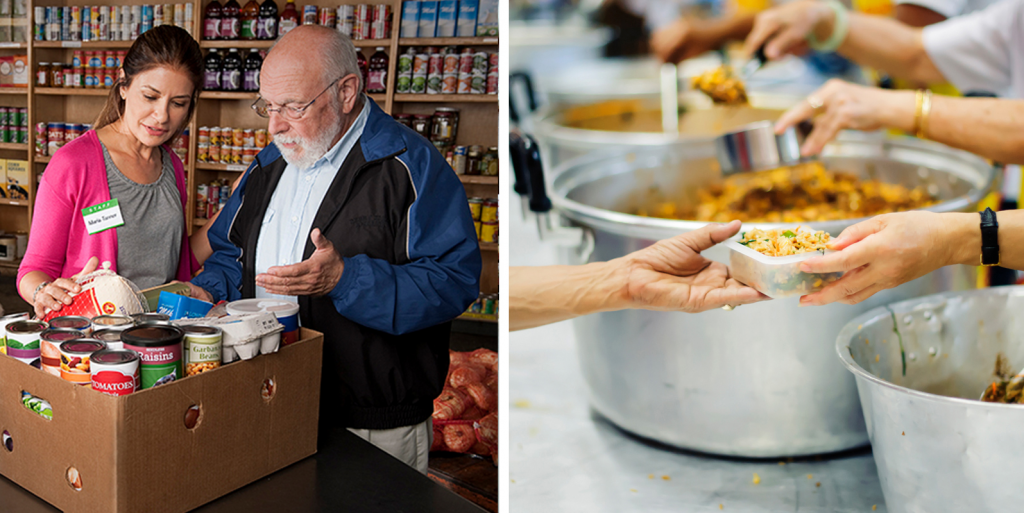 When the Oregon Food Bank was formed in 1988, it served 200,000 people per year. Over the years after that, depending on how great or how modest the public need was, it served as many as 1.7 million or as few as 800,000 people. In 2021, the need is still great, and this year’s “supply-chain issues,” a nuisance when it comes to new wing-tips or video games, is a much more serious matter when it comes to potatoes and rice.
When the Oregon Food Bank was formed in 1988, it served 200,000 people per year. Over the years after that, depending on how great or how modest the public need was, it served as many as 1.7 million or as few as 800,000 people. In 2021, the need is still great, and this year’s “supply-chain issues,” a nuisance when it comes to new wing-tips or video games, is a much more serious matter when it comes to potatoes and rice.
Ashley Mumm of the Oregon Food Bank recently told Jefferson State Radio, “We’re having to pay more for a particular type of food. Some crops are not even being picked because of labor shortages. The things to hold the food in are having trouble being produced. So it’s a lot of cascading things all at once.”
The issue is compounded by the distributed nature of food banks.
Food has to be available to people at a pantry they can reach without driving long distances, preferably that can be reached either on foot or by using public transportation, ideally at a location they are familiar and comfortable with such as a church or community center. At least some food needs to be fresh and available every day, since many people only have a small amount of time every week to go to pick up food, and may have small to no refrigerators, may not be certain of an uninterrupted supply of electricity, or may be unhoused or housing-insecure.
All of these things make distributing food to food pantries one of the biggest challenges which people are facing as they try to supply the needs of their neighbors. Given these obstacles, it’s quite an accomplishment that the Oregon Food Bank is currently distributing over a million pounds of food every week.
One of the easiest ways for a food-insecure family to find a convenient source of food is by using the Food Finder App. It’s a downloadable app which can direct a user to multiple nearby sources of food, describing where and when food will be available, and what is likely to be on offer.
Transportation issues, mentioned earlier, are a major concern – especially while paying unaccustomedly high prices for gasoline. That is the biggest issue they are seeing at Klamath Lake County Food Bank, Nicki Sampson, their Executive Director, told Jefferson State Radio.
“The issue at hand is more for those who don’t qualify for SNAP benefits. Those who sit right there on the fence. Those who don’t qualify, but who still need a little help,” said Sampson. Those same people will soon be needing to pay more for heat as well, as Winter temperatures arrive.
Before the beginning of the pandemic, the Agape House food bank in Hermiston was serving an average of 400 families each month. Now, according to their Executive Director Mark Gomolski, more than 600 families are supplied by them. The in-school breakfasts and lunches elementary school students in Echo and Umatilla receive have for years been supplemented by meal packs which Agape House supplied to the schools for 100 or so students to take home for the weekend.
According to Gomolski, “For some students in our system, the meals they have at school may be the only meals they get all day.” The need is now much greater, with more than twice as many students needing those weekend meals, “but supply chain hiccups make it hard to get the food we need to support those programs,” Gomolski added. “Right now we need chicken noodle soup, ramen noodles, peanut butter, granola bars, instant packages of oatmeal, juice, boxes of raisins, crackers that have cheese or peanut butter in between them, and cans of tuna.”
There are several food pantries in Corvallis, all of which can be found using the Oregon Food Bank’s Food Finder App, or by using other search resources available locally.
By John M. Burt
Do you have a story for The Advocate? Email editor@corvallisadvocate.com

